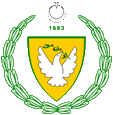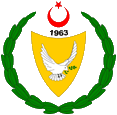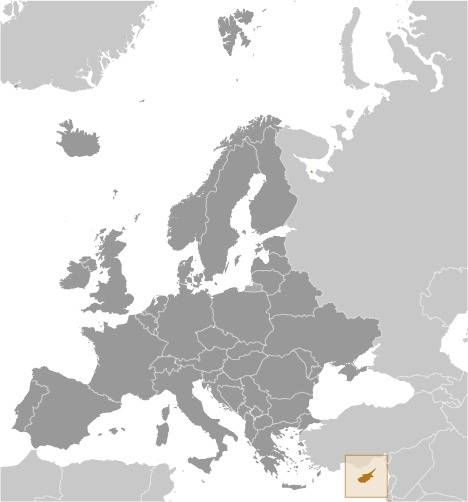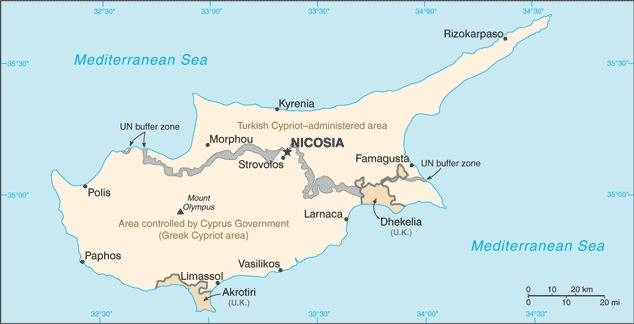 Bedeutung/Ursprung des Wappens: Bedeutung/Ursprung des Wappens: |
 Meaning/Origin of the Coat of Arms: Meaning/Origin of the Coat of Arms: |
| Das heutige
Staatswappen wurde am 27.03.2007 eingeführt. Es geht auf das vorher verwendete Modell
zurück und zeigt einen orangefarbenen Wappenschild mit einer nach oben fliegenden weißen
Taube, die einen Ölzweig mit fünf Oliven im Schnabel hält. Oberhalb des Schildes die
Jahreszahl 1983, und darüber noch Halbmond und Stern in Weiß. Der Schild ist eingefasst
von einem Kranz von Ölzweigen. |
The today's coat of
arms was introduced on 27th of March in 2007. It goes back to the previously used model
and shows an orange shield with a white dove flying upward, holding an olive branch with
five olives in its beak. Above
the shield appears the year 1983, and a white crescent and star. The shield is framed by a
wreath of olive branches. |
| Das vorher verwendete
Wappen, das wahrscheinlich aus dem Jahr 1984 stammt, hatte das Design der Republik Zypern
übernommen und lediglich die Jahreszahl 1963 und Halbmond und Stern in Rot oberhalb des
Schildes ergänzt. |
The previously used
coat of arms, which dates probably from 1984, had taken over the design of the Republic of
Cyprus and merely added the year 1963 and red crescent and star above the shield. |
| Die Taube ist das
Symbol des Friedens, und soll des Friedenswillen der türkischen Zyprer verkörpern. Die
Taube fliegt nach oben, und steht so für den jungen aufstrebenden Staat. Die Ölzweige
links und und rechts des Wappens stehen für Landwirtschaft und Wohlstand. Halbmond und
Stern sind Symoble der Türken, aber auch des Islam. Die Jahreszahl 1983 bezieht sich auf
das Jahr der Gründung der Republik. Die fünf Oliven am Ölzweig im Schnabel der Taube
stehen für die fünf Verwaltungsbezirke des Landes. |
The dove is the symbol
of peace, and should embody the will of peace of the Turkish Cypriots. The dove flies
upwards, and thus stands for this young and aspiring state. The olive branches to the left
and right of the coat of arms stand for agriculture and prosperity. Crescent and star are
Symoble the Turks, but also of Islam. The year 1983 refers to the year of the founding of
the republic. The five olives on the olive branch in the beak of the dove stand for the
five districts of the country. |
 |



